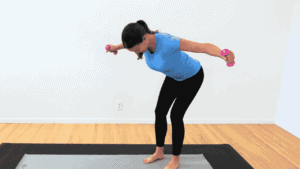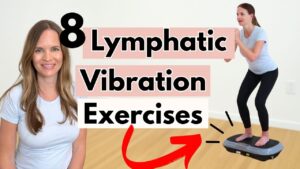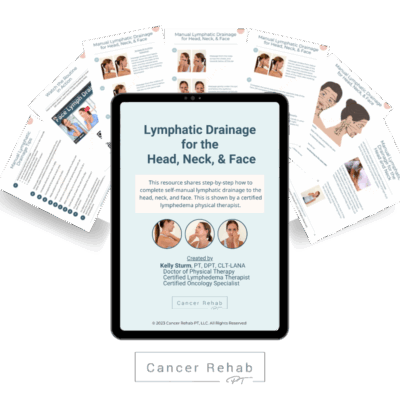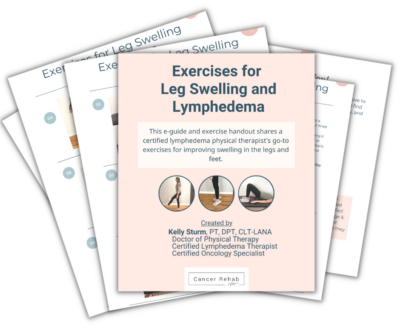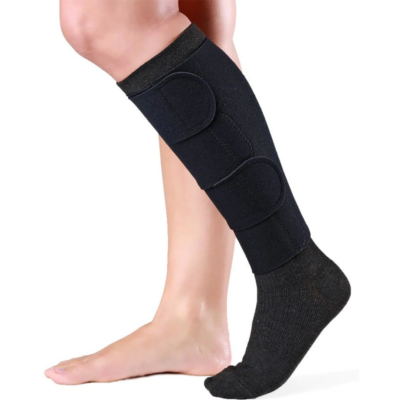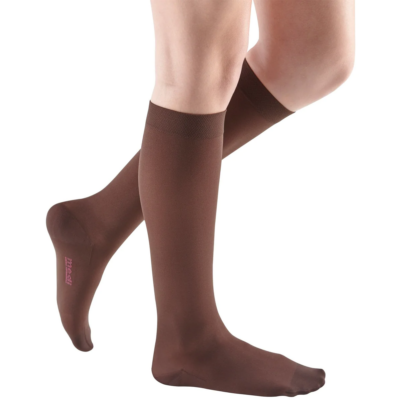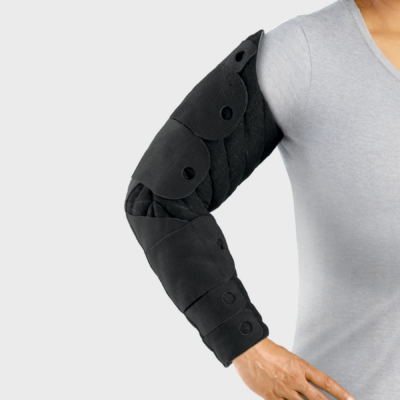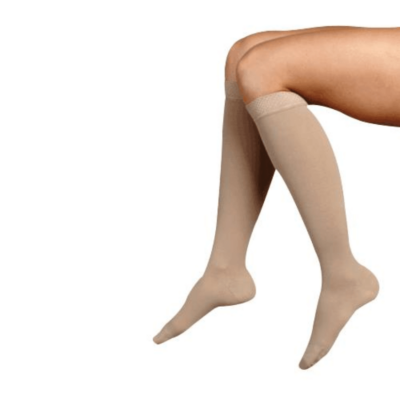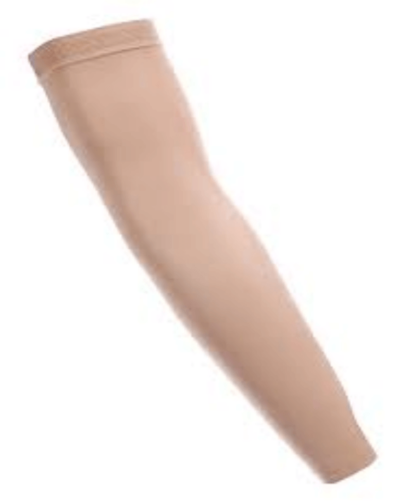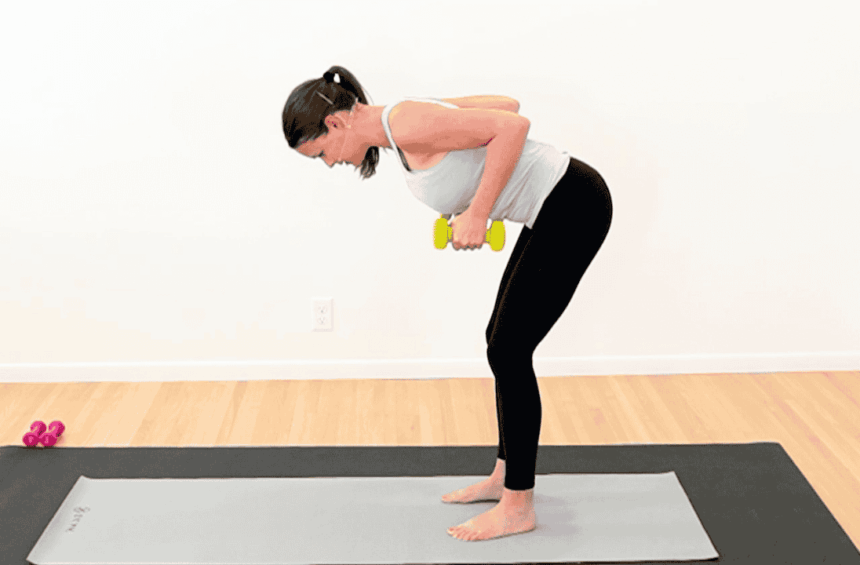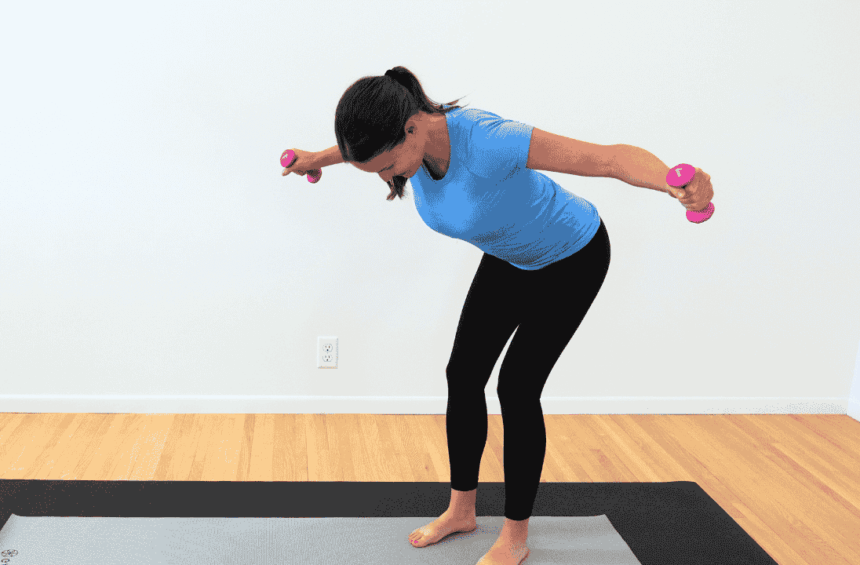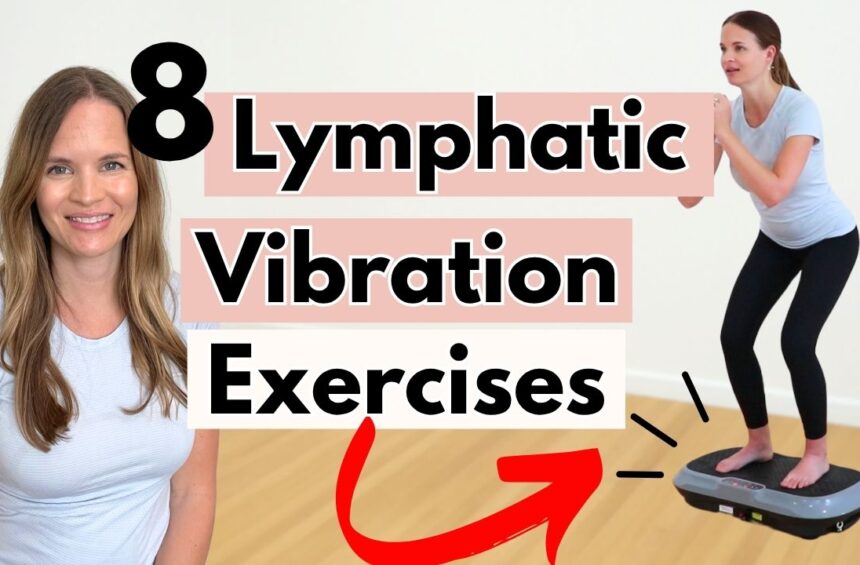Compression therapy uses controlled pressure to improve circulation and reduce swelling throughout your body.
This medical treatment helps manage conditions like lymphedema, varicose veins, and chronic venous insufficiency by supporting your body’s natural fluid drainage systems.
Compression can be applied to your legs, arms, neck, and other parts of your body using specialized garments, bandages, or pneumatic devices. Here’s how it works.
What Is Compression Therapy?
Compression therapy applies gentle, graduated pressure to specific areas of your body to improve blood flow and lymphatic drainage.
The pressure is strongest at the farthest point from your heart (like your ankle or wrist) and gradually decreases as it moves closer to your heart. This pressure gradient helps push fluid back toward your core to reduce swelling and improve circulation.
Depending on your condition, you can use compression stockings, sleeves, bandages, or pneumatic compression devices.
What Is Compression Therapy Used For?
Lymphedema
Lymphedema is a condition that causes chronic swelling because of lymph fluid building up in your tissues. Compression therapy is one of the main forms of treatment for it.
When your lymphatic system can’t drain fluid properly, compression garments act as an external muscle, helping push lymph fluid back toward your heart. The graduated pressure creates a pathway for the fluid to move out of swollen areas.
Chronic Venous Insufficiency
Chronic venous insufficiency occurs when damaged vein valves allow blood to pool in your lower legs instead of returning to your heart. This causes swelling, heaviness, and skin changes.
Compression therapy squeezes your leg muscles and veins, pushing pooled blood upward against gravity and taking over the job your damaged valves can no longer do effectively.
Varicose Veins
Varicose veins form when weakened vein walls allow blood to pool. This causes veins to bulge and twist. Compression therapy applies pressure to these surface veins, forcing blood into deeper, healthier veins that can better handle the return flow to your heart.
Compression won’t eliminate existing varicose veins, but it can help manage the symptoms and prevent new ones from forming.
Deep Vein Thrombosis (DVT)
Deep vein thrombosis is when a blood clot forms in a deep vein, usually in your leg, blocking blood flow and causing swelling to build up behind the clot.
Healthcare providers often recommend compression therapy for people at high risk of blood clots, including those with excess weight, undergoing chemotherapy, or during pregnancy and postpartum periods.
Swelling (Edema)
Swelling can develop for many different reasons, including heart problems or even just prolonged sitting. Compression therapy applies external pressure that prevents fluid accumulation and encourages excess fluid to move back into circulation.
Leg Ulcers
Leg ulcers (including venous leg ulcers) develop when poor circulation prevents proper wound healing. Compression therapy improves blood flow back to your heart, delivering oxygen and nutrients needed for healing while removing waste products that interfere with recovery.
Post-Surgery Recovery
Surgery can disrupt normal blood circulation patterns, especially in procedures involving the legs or lymph nodes. Compression therapy helps maintain the blood flow during recovery, reduces swelling, and prevents blood clots.
Your doctor may also prescribe compression stockings to make you feel more comfortable.
How Does Compression Therapy Work?
Compression therapy uses specially designed garments that apply graduated pressure to improve circulation. These garments can include:
- Compression socks and graduated compression stockings: Available in knee-high, thigh-high, or full-length options, depending on where you need pressure
- Compression sleeves: Cover arms, legs, or other body parts without covering hands or feet
- Compression tights: Full-coverage garments that extend from feet to waist for lower body support
- Compression shorts: Coverage for the lower abdomen to the lower thighs that can be used alone or in conjunction with thigh-high garments.
- Compression bandages: Flexible wraps that can be adjusted and layered for custom pressure levels
- Velcro compression wraps: Garments for various parts of the body that can be tightened and adjusted using Velcro.
- Compression bras: Specialized garments that provide gentle pressure to the chest and torso area, helpful for lymphedema after breast cancer
- Compression gloves: Target swelling in hands and fingers
- Swell spots: Small compression pads for specific problem areas
- Compression machines and compression boots: Pneumatic devices that use air chambers to create rhythmic pressure cycles (intermittent pneumatic compression, sequential compression device, etc.)
Compression garments are rated by pressure levels measured in millimeters of mercury (mmHg). These levels are:
- Low compression (under 20 mmHg)
- Medium compression (20-30 mmHg)
- High compression (over 30 mmHg)
The pressure level you need depends on your specific condition and symptoms.
It’s very important to use a compression garment that fits properly.
Poorly fitting garments can be uncomfortable, ineffective, or even harmful. Your healthcare provider should measure you to determine the right size and compression level for your needs.
How Often Should You Replace Compression Garments?
I recommend replacing compression garments every 4-6 months. Over time, the elastic fibers lose their effectiveness and won’t provide the therapeutic pressure you need.
Compression Therapy Benefits
Compression therapy helps improve circulation and supports your body’s natural drainage systems. When used consistently and with properly fitted garments, it can significantly improve your quality of life and help manage various conditions:
- Reduces swelling and fluid buildup in affected areas
- Improves blood flow and prevents blood from pooling
- Decreases pain and heaviness in legs and arms
- Prevents blood clots from forming during periods of inactivity
- Speeds up wound healing by improving circulation
- Reduces the risk of developing varicose veins
- Helps manage symptoms of chronic conditions like lymphedema
- Supports recovery after surgery or injury
If you live with chronic swelling or lymphedema, effective treatment usually combines compression therapy with lymphatic drainage massage, physical therapy exercises, and other self-care tools.
Side Effects of Compression Therapy
Most side effects from compression therapy occur when garments don’t fit properly or are worn incorrectly. Poorly fitted compression can cause skin irritation, numbness, tingling, or make circulation problems worse.
Always consult your healthcare provider before starting compression therapy to make sure it’s safe for you. You may need to avoid compression therapy with certain medical conditions.
How to Do Compression Therapy at Home
For most people, compression therapy is something that you’ll regularly do at home.
You may be wearing compression tights or other garments throughout the entire day or just for a few hours as needed. I recommend experimenting with your routine and seeing what’s most helpful.
You’ll usually start by putting on your compression garments first thing in the morning when swelling is typically at its lowest. You’ll remove compression garments before bed unless you’re using special nighttime wear.
How Many Hours a Day Should You Wear Compression Garments?
It depends on your condition. For swelling and lymphedema, I recommend doing some self-exploration and testing what routines and types of compression garments work best for your symptoms.
Some people put compression garments on when they get up in the morning and remove them before going to bed. Others may need to wear them for shorter periods. Your healthcare provider may also give you specific guidelines based on your condition.
Does Compression Therapy Actually Work?
Yes, compression therapy has been proven to work for many different conditions, including lymphedema, chronic venous insufficiency, varicose veins, swelling, and post-surgery recovery.
Studies have shown that “compression is a cornerstone in the management of venous and lymphatic insufficiency.” However, it’s important to use well-fitted garments that are meant for your condition.
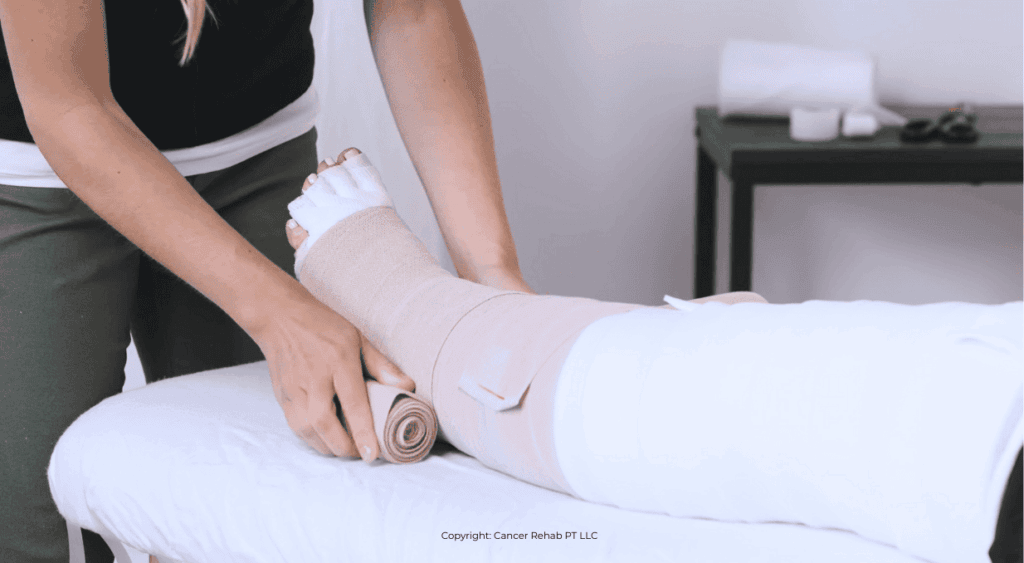
FAQs
How does compression help swelling?
Compression helps reduce swelling by applying external pressure that prevents fluid from accumulating in your tissues and encourages it to move back into your circulation. This creates a pathway for trapped fluid to flow toward your heart, where it can be properly processed and eliminated by your body.
Does compression therapy help with lymphatic drainage?
Yes, compression therapy can help with lymphatic drainage, especially when you’re living with lymphedema. When your lymphatic vessels can’t transport lymph fluid properly on their own, compression garments act like an external muscle, squeezing the vessels and encouraging fluid movement toward your lymph nodes.
Where does the fluid go when wearing compression stockings?
When you wear compression stockings, the trapped fluid is pushed back into your bloodstream and lymphatic vessels, where it travels to your lymph nodes and eventually back to your heart and kidneys to be filtered and eliminated from your body. Your body processes this fluid naturally through urination and normal metabolic processes.
How long does it take for compression to work?
In my practice as a certified lymphedema therapist, I typically see people notice improvement 2-4 weeks after wearing properly fitted compression garments. However, the timeline depends on your condition, how long you’ve had symptoms, and how consistently you wear your garments.
It’s important to know that compression garments are considered maintenance garments, which are meant to prevent swelling from happening and may not reduce large amounts of fluid. I recommend using compression bandaging for a few weeks first to reduce fluid before transitioning to a compression garment like a stocking.
For chronic conditions like lymphedema, you’ll need to continue using compression therapy after your swelling improves to prevent it from developing again.
Who should not use compression therapy?
Avoid compression therapy if you have conditions that affect your skin sensitivity or circulation. This includes peripheral neuropathy, where you can’t feel pressure properly, peripheral artery disease that reduces blood flow, active skin infections, or dermatitis in the treatment area.
The biggest risk comes from wearing compression garments incorrectly. They must fit properly and lie smoothly against your skin without wrinkles. Poorly applied compression can damage your skin or create a tourniquet effect that makes circulation problems and swelling worse.
Compression Therapy for Lymphedema
Compression therapy is an important part of managing lymphedema, chronic swelling, and other conditions like varicose veins. There’s clinical and experimental evidence that supports its effectiveness.
If you’re dealing with chronic swelling or lymphedema, I’ve created resources to help you manage your symptoms using compression therapy and other proven techniques.
These are the tools I’ve used as a certified lymphedema therapist (CLT-LANA) with thousands of patients in the physical therapy clinic, but adapted for the online format.
Learn more about Lower Body Lymphedema Rehab, Breast Cancer Rehab, and Digital Guides.


